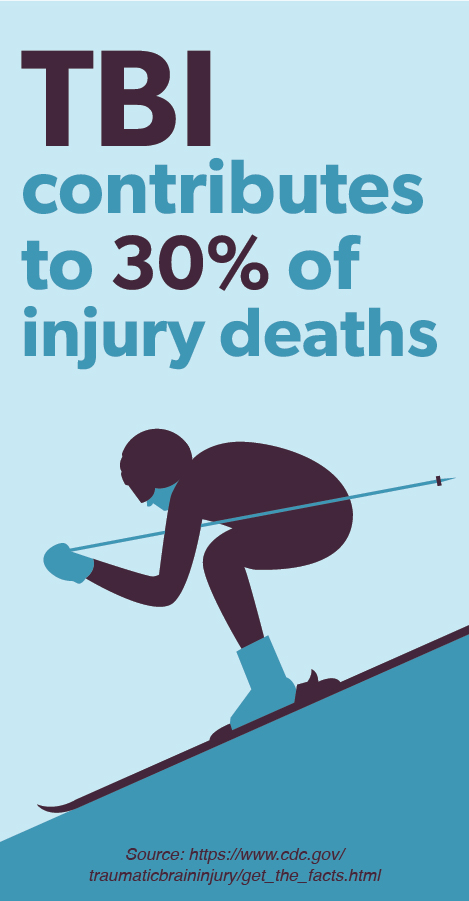Protect your brain during physical winter sports and activities
When playing sports or engaging in rigorous physical activity, protecting the head from Traumatic Brain Injury (TBI) should be one of your most pressing safety concerns for you and your family. And while most of you probably associate winter with warm blankets and cozy fires, some of the most physical sports are played in the winter—hockey, snowboarding, and indoor sports like basketball, to name a few.
January is National Sports TBI Awareness Month, and we want to make sure you’re aware of the TBI dangers these sports can pose, while taking the right steps to stay safe.
What, exactly, is TBI?
According to the Centers for Disease Control and Prevention (CDC), TBI is caused by a bump, blow, or jolt to the head that results in a disruption of normal brain function.
The effects range from mild (a brief change in consciousness, such as confusion or disorientation) to severe (prolonged unconsciousness or memory loss).
What are the consequences?
The CDC estimates that TBI contributes to 30% of all deaths caused by injury.* This statistic points to the importance of keeping your head well-protected when engaging in sports or other physical activities. The most common outcome of TBI is a concussion, which can cause long-term and sometimes debilitating health issues.
So before careening down the wintry slopes on your snowboard or sled, make sure you’re wearing a helmet that’s properly secured, and only participating at your skill and training level. That means no expert runs if you’re a first-time skier.
What to do when suspecting a concussion
If you or someone you know gets hit hard on the head while playing a sport, follow this four-step action plan from the CDC to stay safe:
Step #1: Remove from play
Even if you only suspect a mild concussion, stop participating in any physical activity immediately. When it comes to TBI, it is always better to be extra cautious.
Step #2: Seek medical attention
Concussions aren’t always easy to identify, so make sure to get properly diagnosed by a professional.
Step #3: Inform and educate
Parents, spouses, and other family members need to be aware if a loved one has experienced a concussion or TBI. Click here to access a basic fact sheet that can be distributed to family members.
Step #4: Get written care instructions
Upon seeing a medical provider, make sure to get written care instructions for how to treat the concussion. This ensures that vital information isn’t forgotten or lost in translation.

